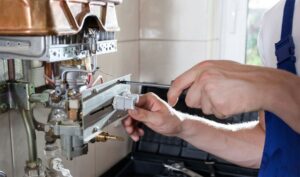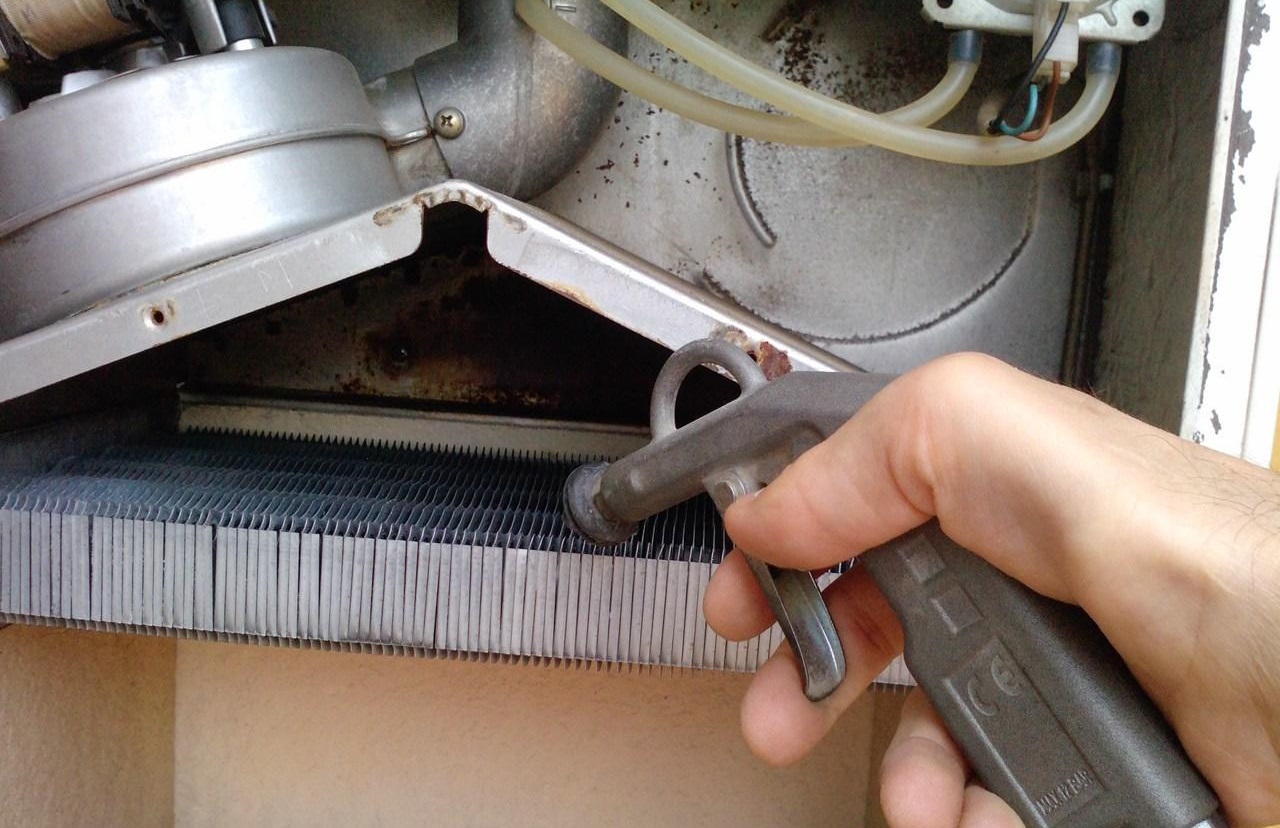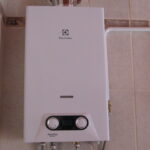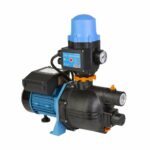Geyser: do-it-yourself repair

moyo.ua
A geyser is a convenient and practical device for heating water for domestic purposes. Particularly popular in private homes, often staying in baths. The main competitor of the geyser is the boiler, which is inferior to the first in reliability. A classic boiler does its job properly for 5-6 years, after which it begins to leak or break down. With regular care, the column can work twice as long.
If your geyser won’t light, but you can’t or don’t want to call a specialist, or if you need urgent repairs to the device, read on to learn how to repair a geyser yourself. Below we will describe the most common causes of geyser malfunctions, and also briefly describe the principle of operation of the device.
Brief operating principle of the column. Based on the principle of operation, the column can be compared to a kettle. True, it differs in the method of ignition and water supply, depending on the model and manufacturer, but the concept is the same:
There is a metal tank with water pipes connected to it. It is filled with water, and the burner is turned on from below. The burner itself is connected to a gas pipe. The gas burns and heat is released. It is transferred to the heat exchanger and absorbed by water. Next, water enters the system.
Causes of malfunction. Next, we will look at 5 reasons why the gas water heater does not work:
- Eating problems
- No gas
- Low water pressure
- Heating is not working properly
- The device is leaking
A common cause of geyser “breakdown” is discharged power elements. To check, press the device's power button: if nothing happens, then the problem is in the control system.This means that the ignition mechanism is not working, most likely due to dead batteries.
It is recommended to replace them with a new set or purchase a suitable battery. To do this, remove the control unit with batteries, replace them and put it in place. The required voltage and size are indicated in the instructions. A battery with a capacity of more than 1.7 thousand mAh is best suited.
Lack of gas is a common reason why the dispenser does not light up. There are several options: gas either does not enter the device at all, or there is a leak somewhere. Modern models of geysers, both luxury and budget, are equipped with protection in case of gas leakage - if it occurs, the device will shut off the supply. This avoids an explosion, but this may also prevent the gas water heater from igniting.
First make sure there is gas in the system. If not, then the problem is not in the gas water heater - contact specialized services. Otherwise, check for smell and hearing to see if there is a leak. Most often, the joint between the column and the gas pipe “leaks”. To check, use a cleaning solution (combine a small amount of water with detergent to create more foam) - apply it to the joints. If bubbles appear, the joint is leaking. In this case, you need to call gas workers. Do-it-yourself repairs are prohibited due to the risk of explosion.
Low water pressure. With each new generation, geysers are equipped with an increasing number of protection systems. One of them is protection against heat exchanger burnout.
During operation, the heat generated by the burner is transferred to the heat exchanger, but it does not stay there - it is absorbed by water. If there is not enough water, the heat exchanger will heat up. As a result, it burns out and leaks.To avoid this, special sensors are built into the device that detect water pressure.
There are three reasons: water does not enter the system, filters are clogged and scale has formed. With the first, everything is clear - the water simply does not reach the unit: either the water supply is turned off, or there are leaks. If your filters are clogged, simply remove the inlet block and wash them. Scale forms during the operation of a gas water heater; this is a natural process. The water overheats, calcium salts are released from it, which settle on the heat exchanger tubes and reduce the pressure. To avoid this, it is recommended to clean the column regularly (1-2 times a year).

sdelay.sam.ua
Incorrect heating. The column can operate at full capacity, but the water does not heat up enough. Reasons for this:
- Soot formation under the heat exchanger
- Scale formation inside the device
- Defective membrane/insufficient gas supply
The gas burns in the burner and transfers heat to the heat exchanger. Sometimes the heat exchanger becomes covered with soot. It absorbs the heat intended for the water. This happens due to various reasons. To fix it, you need to remove the device and clean it of soot.
Scale forms inside the heat exchanger tubes. It reduces the diameter of the pipes, reducing water pressure. Also, scale, like soot, absorbs heat, so the water leaving the gas water heater may be cold. To get rid of scale, dismantle the column and use a special cleaner. This cleaning should be done 1-2 times a year.
The gas column has a membrane to move the valve stem. This is regulated by water pressure.A faulty diaphragm does not move the rod, causing the burner to not receive enough gas. Remove the water assembly and inspect the diaphragm and stem. How to dismantle the unit is described in the instructions for the device. If the membrane is broken or the rod is dirty, scratched or scored, replace them.
The device is leaking. Reasons for leakage:
- Worn seals
- Hydraulic elements are leaking
Seals seal the hydraulic elements of the column and are located at their junctions. Like everything, they wear out over time. When the column begins to leak due to wear, it is necessary to replace it. Turn off the water and gas supply, dismantle the elements, replace the seals, put everything back together and turn on the supply.
Hydraulic elements of a gas water heater are the main components. This is usually the name given to the heat exchanger and its tubes. They are subjected to increased loads (direct contact with flames and high water pressure), so they often begin to leak. This can be corrected by replacing or repairing leaking elements.




